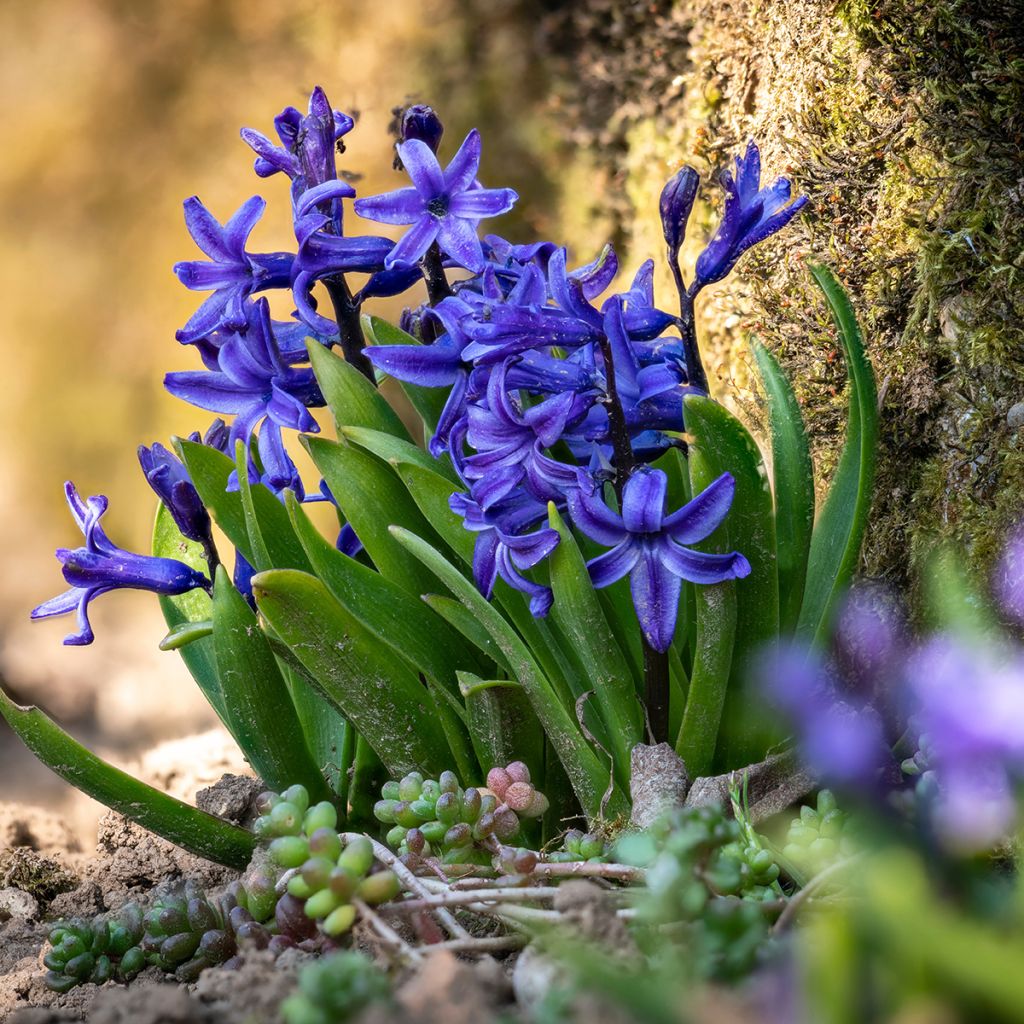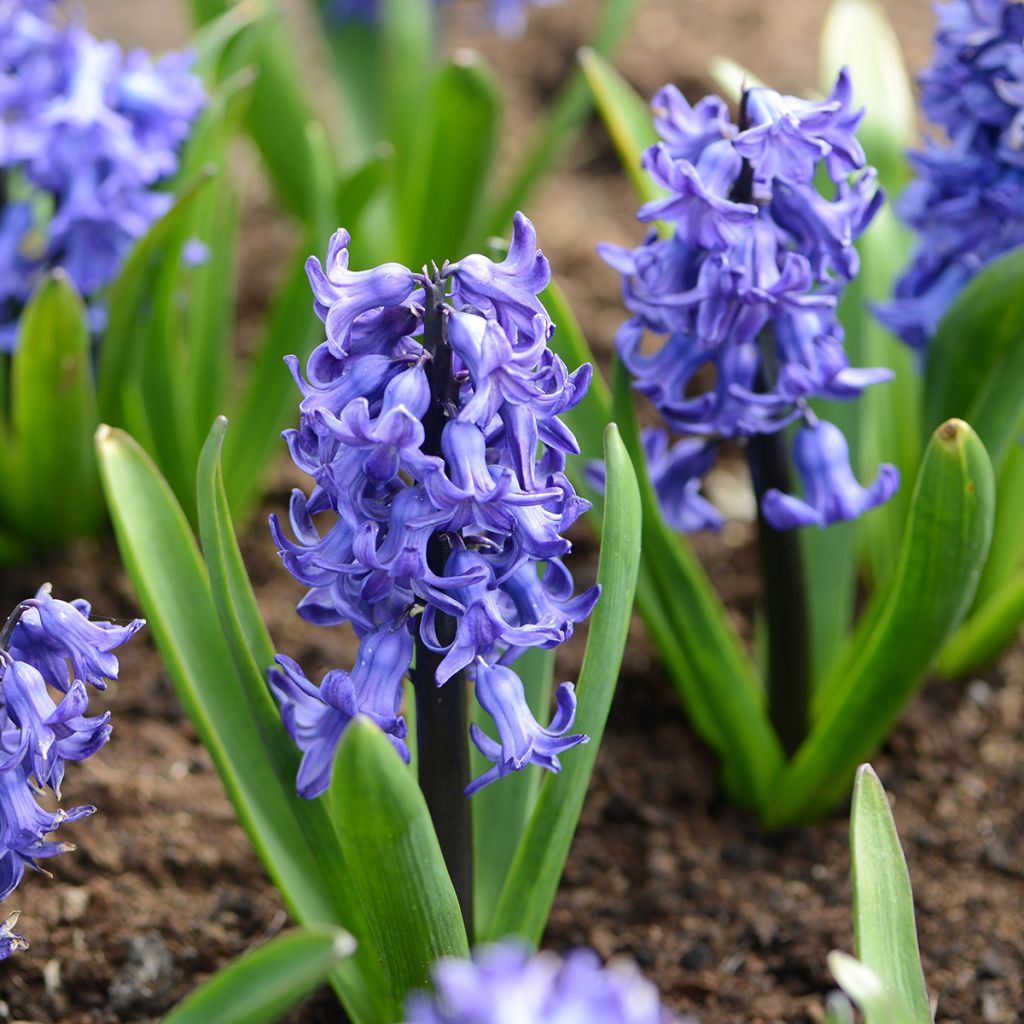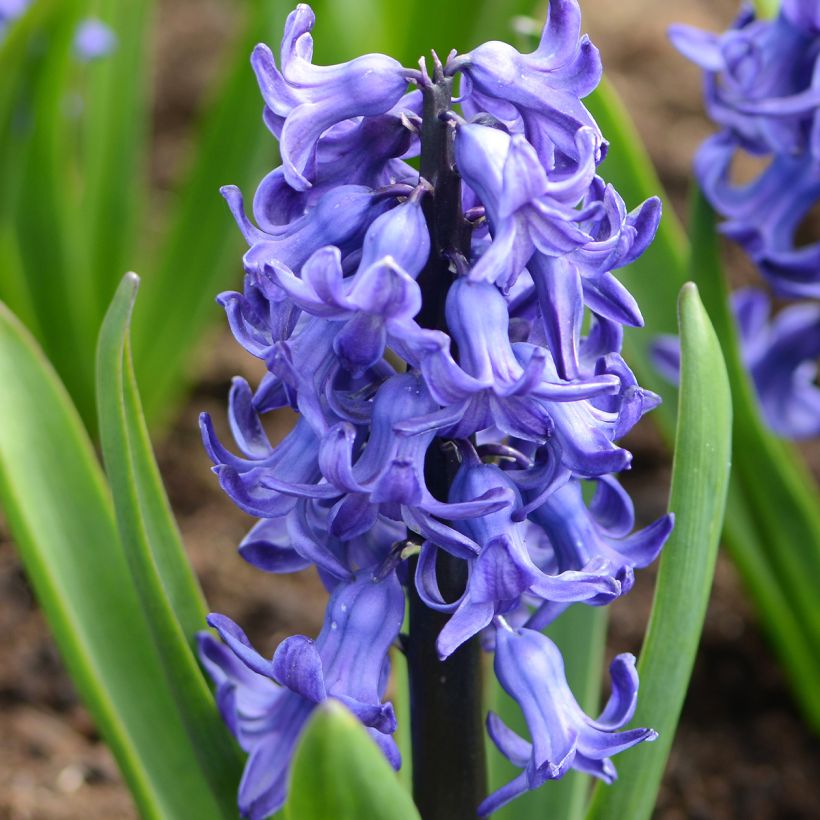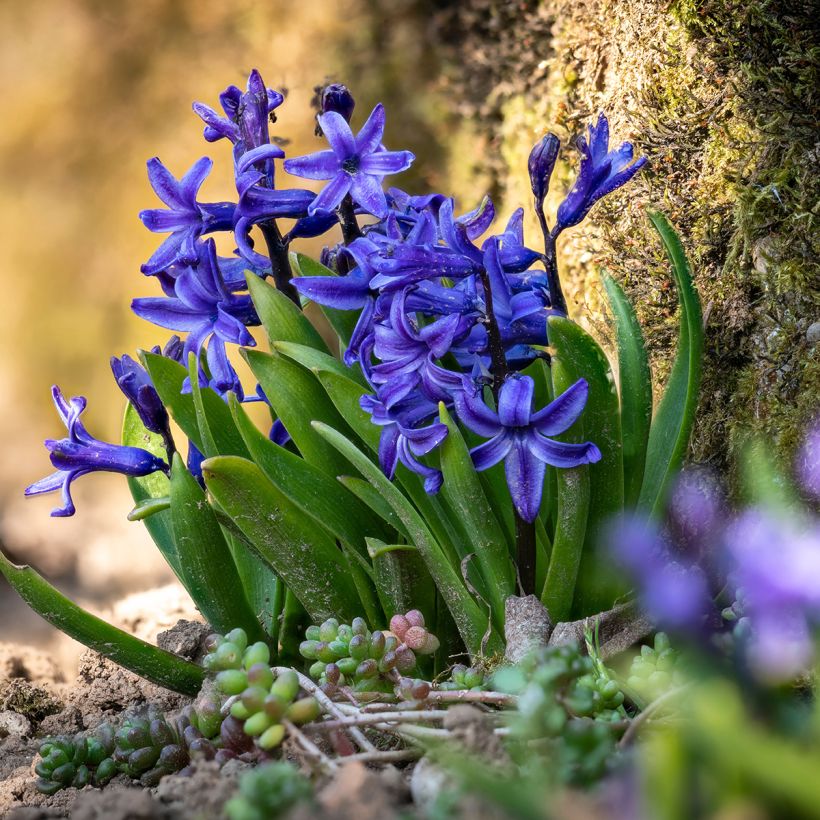

Jacinthe Blue star


Jacinthe Blue star
Hyacinthus Blue star - Garden Hyacinth
Hyacinthus x orientalis Blue star
Common Hyacinth, Garden Hyacinth
Reception as expected. The colour is beautiful as well as the fragrance.
Alain, 14/03/2024
This plant carries a 6 months recovery warranty
More information
We guarantee the quality of our plants for a full growing cycle, and will replace at our expense any plant that fails to recover under normal climatic and planting conditions.
From €5.90 for pickup delivery and €6.90 for home delivery
Express home delivery from €8.90.

Does this plant fit my garden?
Set up your Plantfit profile →
Description
The Hyacinthus orientalis or Blue Star Hyacinth is a highly fragrant variety, with a blue azure flowering in various shades. This bulb produces dense spikes of pale blue star-shaped flowers veined with a deeper blue, carried on a violet-coloured stem. This mid-season variety also exhibits beautiful foliage and glossy leaves. In the garden, it usually blooms in early March, as soon as the first sunny days arrive. It is possible to force the bulbs for winter flowering at home.
Although the Oriental Hyacinth is no longer widely cultivated, this species, native to the Middle East and Mediterranean regions, has given rise to countless popular cultivars in gardens for their delightful spring flowering, or in floristry for their forcing ability. This botanical species can be found naturalized in France in the Bouches-du-Rhône, Var, Alpes-Maritimes, and Lot-et-Garonne regions.
The 'Blue Star' hyacinth, just like its parent species, belongs to the family of hyacinths or asparagus. This cultivar was officially registered in 1982. The plant has a large oval bulb and forms a clump of bright green leaves, from which a very dark, sturdy flower stem emerges in March, measuring 20 to 25 cm (8 to 10in) in length, bearing numerous thick and waxy star-shaped flowers. Their colour is sky blue with a lighter border, veined with violet-blue. They are tightly packed together and emit a sweet fragrance. The foliage is deciduous after flowering. It is at this time that the bulb, whose reserves are depleted, enters dormancy. The forcing technique involves exposing the bulbs to cold for several weeks, starting from the end of summer, to break their dormancy and induce the flowering process. The forced bulbs flower indoors between December and January.
Among early bloomers, the hyacinth is one of the few bulbs with large flowers and one of the easiest to force for winter flowering. Give it a prime spot in a very bright room, away from any sources of heat. Forcing at home is child's play: for example, use a narrow-necked vase specifically designed for forcing hyacinth bulbs. Fill it with water and place the bulb so that its base is just touching the water. Make sure the water level always reaches the base of the bulb, but never higher.
Feel free to mix different plant species suitable for this cultivation method to create original compositions: tulips, daffodils, crocuses, Greek anemones, squills, as well as branches of Japanese quince, forsythias, apple trees, cherry trees, plum trees. Hyacinth flowers are edible, both raw and cooked, and have a slightly mucilaginous texture. Depending on preferences, they can be candied or added to fruit salads. In the past, they were considered a delicacy and could be found under the name of "Candied Constantinople Hyacinth". The 'Blue Star' hyacinth will look stunning alongside the 'Fondant' variety (soft pink) or 'Jan Bos' variety (raspberry red).
Report an error about the product description
Hyacinthus Blue star - Garden Hyacinth in pictures




Plant habit
Flowering
Foliage
Botanical data
Hyacinthus
x orientalis
Blue star
Hyacinthaceae
Common Hyacinth, Garden Hyacinth
Cultivar or hybrid
Planting and care
The Blue Star Hyacinth is planted in October/November by burying the bulbs at a depth of 8/10 cm (3/4in) with a spacing of 15/20 cm (6/8in). In very harsh climates, mulch it to protect it from severe cold. After flowering, wait for the leaves to turn yellow and wither before pulling out the bulbs, which will be stored in a dry place until they are replanted in the following autumn. The second year's flowering will generally be less beautiful than the first, but still very acceptable for border decoration. It can also be left in the ground, especially in regions where the summer is dry.
Planting period
Intended location
Care
-
, onOrder confirmed
Reply from on Promesse de fleurs
Haven't found what you were looking for?
Hardiness is the lowest winter temperature a plant can endure without suffering serious damage or even dying. However, hardiness is affected by location (a sheltered area, such as a patio), protection (winter cover) and soil type (hardiness is improved by well-drained soil).

Photo Sharing Terms & Conditions
In order to encourage gardeners to interact and share their experiences, Promesse de fleurs offers various media enabling content to be uploaded onto its Site - in particular via the ‘Photo sharing’ module.
The User agrees to refrain from:
- Posting any content that is illegal, prejudicial, insulting, racist, inciteful to hatred, revisionist, contrary to public decency, that infringes on privacy or on the privacy rights of third parties, in particular the publicity rights of persons and goods, intellectual property rights, or the right to privacy.
- Submitting content on behalf of a third party;
- Impersonate the identity of a third party and/or publish any personal information about a third party;
In general, the User undertakes to refrain from any unethical behaviour.
All Content (in particular text, comments, files, images, photos, videos, creative works, etc.), which may be subject to property or intellectual property rights, image or other private rights, shall remain the property of the User, subject to the limited rights granted by the terms of the licence granted by Promesse de fleurs as stated below. Users are at liberty to publish or not to publish such Content on the Site, notably via the ‘Photo Sharing’ facility, and accept that this Content shall be made public and freely accessible, notably on the Internet.
Users further acknowledge, undertake to have ,and guarantee that they hold all necessary rights and permissions to publish such material on the Site, in particular with regard to the legislation in force pertaining to any privacy, property, intellectual property, image, or contractual rights, or rights of any other nature. By publishing such Content on the Site, Users acknowledge accepting full liability as publishers of the Content within the meaning of the law, and grant Promesse de fleurs, free of charge, an inclusive, worldwide licence for the said Content for the entire duration of its publication, including all reproduction, representation, up/downloading, displaying, performing, transmission, and storage rights.
Users also grant permission for their name to be linked to the Content and accept that this link may not always be made available.
By engaging in posting material, Users consent to their Content becoming automatically accessible on the Internet, in particular on other sites and/or blogs and/or web pages of the Promesse de fleurs site, including in particular social pages and the Promesse de fleurs catalogue.
Users may secure the removal of entrusted content free of charge by issuing a simple request via our contact form.
The flowering period indicated on our website applies to countries and regions located in USDA zone 8 (France, the United Kingdom, Ireland, the Netherlands, etc.)
It will vary according to where you live:
- In zones 9 to 10 (Italy, Spain, Greece, etc.), flowering will occur about 2 to 4 weeks earlier.
- In zones 6 to 7 (Germany, Poland, Slovenia, and lower mountainous regions), flowering will be delayed by 2 to 3 weeks.
- In zone 5 (Central Europe, Scandinavia), blooming will be delayed by 3 to 5 weeks.
In temperate climates, pruning of spring-flowering shrubs (forsythia, spireas, etc.) should be done just after flowering.
Pruning of summer-flowering shrubs (Indian Lilac, Perovskia, etc.) can be done in winter or spring.
In cold regions as well as with frost-sensitive plants, avoid pruning too early when severe frosts may still occur.
The planting period indicated on our website applies to countries and regions located in USDA zone 8 (France, United Kingdom, Ireland, Netherlands).
It will vary according to where you live:
- In Mediterranean zones (Marseille, Madrid, Milan, etc.), autumn and winter are the best planting periods.
- In continental zones (Strasbourg, Munich, Vienna, etc.), delay planting by 2 to 3 weeks in spring and bring it forward by 2 to 4 weeks in autumn.
- In mountainous regions (the Alps, Pyrenees, Carpathians, etc.), it is best to plant in late spring (May-June) or late summer (August-September).
The harvesting period indicated on our website applies to countries and regions in USDA zone 8 (France, England, Ireland, the Netherlands).
In colder areas (Scandinavia, Poland, Austria...) fruit and vegetable harvests are likely to be delayed by 3-4 weeks.
In warmer areas (Italy, Spain, Greece, etc.), harvesting will probably take place earlier, depending on weather conditions.
The sowing periods indicated on our website apply to countries and regions within USDA Zone 8 (France, UK, Ireland, Netherlands).
In colder areas (Scandinavia, Poland, Austria...), delay any outdoor sowing by 3-4 weeks, or sow under glass.
In warmer climes (Italy, Spain, Greece, etc.), bring outdoor sowing forward by a few weeks.


































